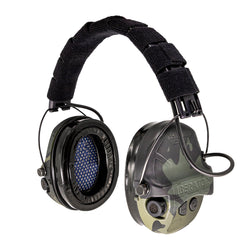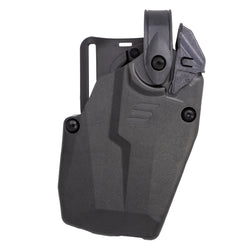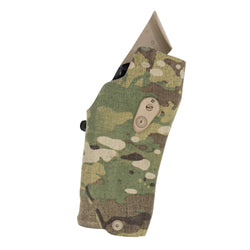At 4:30 a.m. on September 20, 2025, I stirred awake on a hilltop in western Pennsylvania’s serene countryside. Nestled in my Warbonnet Blackbird hammock, I gazed at the Milky Way’s brilliant arc overhead, my lungs filling with the crisp, invigorating air of a late-summer dawn.
As I brewed my first cup of coffee, the camp stirred to life—faint lights flickering, muffled voices echoing. An electric buzz hummed in the air. The 5th annual Pennsylvania Light Fighter Challenge, hosted by Lodestone Training and Consulting, was mere hours from kickoff. Today promised transformation through grit and determination.

Meet Lodestone Training and Consulting
Founded by Pennsylvania native Jared Ross, a retired Green Beret, Lodestone Training and Consulting (LTAC) blends elite military expertise with accessible skill-building. Ross served as an 18 Bravo (Special Forces Weapons Sergeant) with the 5th Special Forces Group and 20th Special Forces Group, plus as an 11 Bravo infantryman in the 82nd Airborne Division. His deployments spanned Afghanistan, Iraq, Jordan, Israel, and the Dominican Republic.
Ross’s credentials are rock solid, having served as a 2013–2016 instructor for the 20th Group’s Special Forces Advanced Urban Combat course, where he led annual classes and oversaw marksmanship and force-on-force training as NCOIC. With decades of real-world tactics under his belt, Ross excels at forging shooters and survivors.
LTAC’s instructor cadre includes those with military, law enforcement, and civilian competition backgrounds, each with decades of operational and instruction experience. A host of student volunteers, friends, and family members make events like this possible and are an invaluable part of the community.

The Essence of the Pennsylvania Light Fighter Challenge
Inspired by grueling ordeals like Philmont Boy Scout Reservation treks and Special Forces Selection, Ross channels a simple truth: Embracing hardship and refusing to quit sparks profound growth.
The Pennsylvania Light Fighter Challenge embodies this ethos, inviting civilians and veterans alike to conquer the impossible. Drawing from history’s elite light infantry—Rogers’ Rangers, the First Continental Regiment, Selous Scouts, and Native American warriors—these “light fighters” thrived as self-reliant jacks-of-all-trades. They humped gear for survival and mission success, where versatility meant life or death.
Each challenge kicks off with a 7–9-mile ruck under a minimum 35-pound dry-weight pack. It weaves in shooting stations plus survival skills like fire-starting, land nav, knot-tying, lock-picking, and trauma care. Routes and tasks evolve yearly, but the ruck and marksmanship endure.
Open to all, it’s affordably priced and prepped by train-up events—ensuring everyone has the opportunity to start strong.
The 2025 Pennsylvania Light Fighter Challenge Unfolds
Hosted at Longshot Ammo and Arms’ sprawling 1,000-yard range in Fairmount City, Pennsylvania, the venue’s diverse terrain—rolling hills, dense woods, open fields—proved ideal for testing limits.
Check-in opens at 5:30 a.m., allowing gear tweaks to meet specs. Waivers signed, rifles inspected, and packs weighed (35+ lbs dry). (Packing tips are covered in pre-event classes.) Magazines are surrendered and sorted for distribution at the appropriate stage. By 7 a.m., participants toe the line with hearts pounding in anticipation.

Stage 1: The Ruck March
No Light Fighter skips the grind: 7–9 miles with your 35-pound pack, rifle slung. This year’s 7-mile loop twists along dirt roads, off-trail scrambles, and game paths—riddled with steep elevation shifts.
Finishers log times, gulp water, and choose their skills order. Breath caught? Game on. The ruck is there to get you to the main event.

Stage 2: Pistol Fundamentals
Packs and rifles down. Grab a loaner Glock 26 (iron sights) and ten 10-round magazines for an 8-inch target at 20 yards.
Untimed, it probes adaptability and core marksmanship. Simple? Yes, but deceptively tough—most eked out just a handful of hits, underscoring the unforgiving nature of precision with a handgun. Especially an unfamiliar “battlefield pickup”.

Stage 3: Shoot and Scoot
At this stage, reclaim your 20-round mag. From 15 yards, blaze 10 rounds while moving right-to-left, then 10 left-to-right. Threat targets are mingled with no-shoots (innocents). Penalties are applied for collateral damage, with scores recorded on precision hits. This drills dynamic movement, target identification, and fire-angle discipline—essentials in chaotic situations.

Stage 4: Crawl to Cover
30-round mags are issued. Sprint to the start point, drop to prone, and low-crawl to a vehicle barricade. Load up, then fire 10 rounds from three shifting positions, leveraging the rig for stability and cover.
This stage hones cover vs. concealment savvy and unconventional shooting positions—because fights rarely offer ergonomic perches.


Stage 5: Positional Precision
The final shooting stage features static targets at 50 yards from awkward stances: prone, kneeling, unsupported. Stress-tested fundamentals rule here—steady under duress from unsupported positions.

Stage 6: The Hunt
LTAC ally Martin Solomossy—a retired Marine, master outdoorsman, and Mossy Forge tomahawk artisan—crafted this primal stage.
Evoking Native American coming-of-age hunts, it opens with a medieval crossbow shot. Hit the target, drop the bow, and dash to split a log with a hatchet. Then haul a 90-pound duffel across a field, snake an obstacle, and hoist it onto a truck tailgate. It’s brutal cardio for all builds—small frames felt the burn deepest.



Stage 7: Trauma Lane
Atop a punishing hill, a battle-tested Navy Corpsman judges wound-packing on a simulated penetrating-injury cube. Gauze in to stop the bleed, Ace wrap to seal, and apply pressure—pure technique, no clock. Lightfighters treat as fiercely as they fight; self-aid saves lives.

Stage 8: Silent Stalker
Drop the pack, keep the rifle. Camo up with your kit or scavenged foliage, then ghost your way to the end point with the aid of a rough map, all while evading “hunters” in the woods. Stealth, camouflage, terrain masking, and low-profile movement determine success.

Stage 9: Fire Mastery
Fire is survival’s lifeline, providing warmth, water, meals, and the ability to signal. Post-ruck, everyone’s fire kit was issued: a piece of 2×4, waxed cotton tinder pad, and wooden matches.
At the station, 15 minutes are allowed to prep the fire lay. The clock starts at the first strike of the match. Boil your issued cup of water to halt time. Failure here means a compromised score. Failure in real life could mean the difference between life and death.


Why Lightfighter Endures
A true lightfighter is more than just a shooter. They ruck to the fray, blend into their environment, navigate wilds, and sustain themselves amid chaos and curveballs. Spanning 10+ miles, the challenge demands self-reliance, gear, grit, and ingenuity.

Prizes are presented to the top three, but true victory comes from breaking down personal barriers. Finishers glow with hard-won pride; I’ve witnessed elite competitors mentor stragglers, doubters shatter barriers, and returnees redeem last year’s stumbles. Lessons abound: resilience, teamwork, growth, and community.

Unlike pure shoot-fests or fitness gauntlets, Light Fight demands wholeness—echoing Rogers’ Rangers, who weren’t mere riflemen but unbreakable brothers in the bush.
Ready to claim the Pennsylvania Lightfighter Tab? Gear up for 2026 and keep an eye on the Lodestone Training and Consulting website for details.










